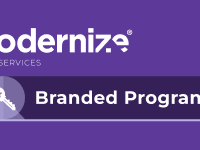Homeowners remodel kitchens to improve functionality, boost home value, and create more enjoyable living spaces. Whether your business specializes in full kitchen renovations, custom cabinetry, or countertop installation, your success depends on connecting with homeowners ready to begin their projects.
This guide explains how kitchen remodeling professionals can generate qualified homeowner inquiries, strengthen local visibility, and measure ROI from their marketing efforts.
- What Is a Kitchen Remodel Lead and Why Does It Matter?
- How Can Kitchen Remodel Contractors Attract Local Leads Online?
- Are Lead Generation Services Worth It for Kitchen Remodelers?
- How Quickly Should Contractors Respond to Kitchen Leads?
- How Do Kitchen Remodeling Companies Measure ROI from Lead Generation?
- What Types of Kitchen Remodel Projects Are Most In Demand?
- What Trends Are Driving Kitchen Remodel Demand?
- Key Takeaways
- FAQ: Everything You Need to Know About Kitchen Remodel Leads
What Is a Kitchen Remodel Lead and Why Does It Matter?
A kitchen remodel lead is a homeowner actively researching or requesting quotes for renovation projects such as cabinet replacement, countertop installation, or full kitchen redesigns. These leads are typically high intent because homeowners view kitchens as one of the most valuable rooms to upgrade.
Access to verified kitchen remodel leads helps contractors maintain a steady project pipeline, especially during peak remodeling seasons. Whether your business focuses on high-end custom builds or cost-conscious updates, every qualified lead represents a strong opportunity for revenue growth.
To understand how Modernize evaluates and prices homeowner and consumer leads, see How Much Do Modernize Leads Cost.

How Can Kitchen Remodel Contractors Attract Local Leads Online?
Most homeowners begin their search online with queries like “kitchen remodeling contractors near me” or “average kitchen remodel cost.” To reach these high-intent homeowners:
- Optimize for local SEO: Add service and city-specific keywords such as “kitchen renovation in [City]” or “custom kitchen design near me.”
- Maintain your Google Business Profile: Keep photos, hours, and verified reviews current.
- Encourage online reviews: Authentic testimonials boost credibility and local ranking.
- Publish educational content: Write about topics like “how much does a kitchen remodel cost,” or “kitchen remodel ideas for small spaces.” See Forbes Home’s Kitchen Remodel Cost Guide for an example of helpful content homeowners search for.
- Showcase project photos: Before-and-after visuals of completed kitchens build trust and inspire homeowners to contact you.
Strong online visibility ensures your company appears when homeowners are ready to request estimates or schedule consultations.
Are Lead Generation Services Worth It for Kitchen Remodelers?
Lead generation services can help remodeling professionals supplement their own marketing by connecting with homeowners ready to invest in kitchen improvements. The most effective programs provide:
- Transparent pricing and flexible budgets
- Verified homeowner data
- Real-time delivery of qualified inquiries
- Targeting by location, project type, or budget range
- Reporting tools to measure ROI
Before purchasing leads, evaluate how providers verify homeowner intent and match projects to your service area.
For more insight into Modernize’s process, see What to Expect When You Sign Up for Modernize Leads.
How Quickly Should Contractors Respond to Kitchen Leads?
Speed matters. Homeowners comparing multiple contractors typically hire the one who responds first. A quick, professional response sets the tone for trust and credibility.
To improve your close rate:
- Respond to new leads within minutes.
- Use CRM alerts or text notifications to ensure timely follow-up.
- Personalize your outreach — reference the homeowner’s project size, budget, or design goals.
For more response tips, see Modernize’s Guide to Lead Follow-Up Best Practices.
How Do Kitchen Remodeling Companies Measure ROI from Lead Generation?
Tracking marketing performance helps identify your most effective channels and optimize ad spend:
- Cost per lead (CPL): The average amount spent to acquire each qualified inquiry.
- Conversion rate: The percentage of leads that turn into booked consultations or signed contracts.
- Average project value: The typical revenue per kitchen remodel.
- Return on ad spend (ROAS): The overall profitability of your marketing investments.
To learn how Modernize helps contractors analyze performance data, explore the Modernize Data Feedback Loop.
What Types of Kitchen Remodel Projects Are Most In Demand?
Understanding homeowner demand helps refine your marketing focus and service offerings:
- Full Kitchen Remodels: Complete overhauls including cabinetry, flooring, and appliances; typically $25,000–$75,000.
- Cabinet Replacement or Refacing: High-impact upgrades averaging $5,000–$15,000.
- Countertop Installation: Granite, quartz, and solid-surface materials range $3,000–$8,000.
- Lighting and Electrical Upgrades: Energy-efficient systems; $1,500–$4,000.
- Flooring Installation: Tile, hardwood, or luxury vinyl options; $2,000–$6,000.
What Trends Are Driving Kitchen Remodel Demand?
Several market and homeowner trends are contributing to steady growth in kitchen remodel projects:
- Open concept designs: Homeowners seek connected living spaces that enhance flow and social interaction.
- Sustainability: Recycled materials and energy-efficient appliances remain top priorities.
- Smart kitchens: Connected devices and touchless fixtures are increasingly in demand.
- Aging-in-place remodeling: Functional layouts and accessible designs appeal to aging homeowners.
- ROI focus: Kitchens consistently rank among the highest-return home improvement projects, according to the Remodeling Cost vs. Value Report.
By aligning your marketing with these homeowner priorities, your business can attract design-conscious, high-intent leads.
Key Takeaways
- Kitchen remodel leads connect contractors with homeowners ready to invest in home upgrades.
- SEO, verified reviews, and quick response times drive stronger conversion rates.
- Tracking CPL, conversion rate, and project value helps refine marketing strategy.
- Sustainability, technology, and open-concept designs continue to shape homeowner demand.



